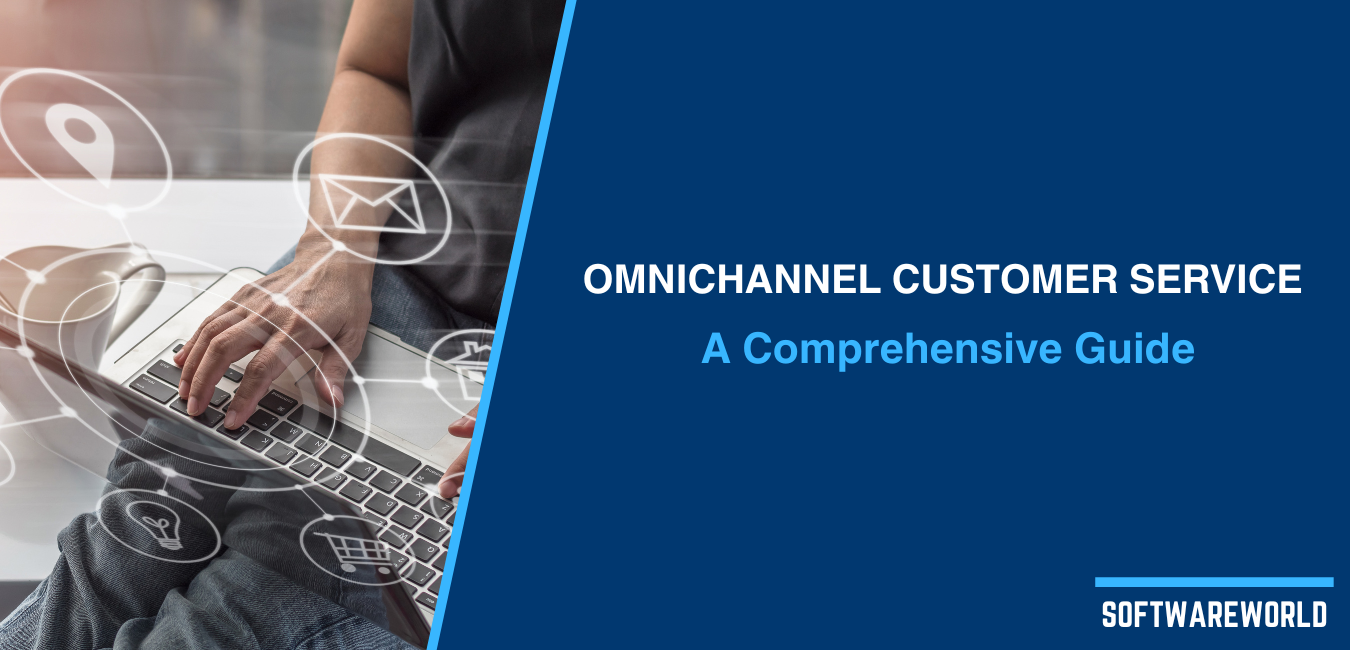Table of Contents
-
- What is eCommerce Customer Service?
- Why does your eCommerce Brand Need to Change Customer Service Strategies?
- 10 Competent eCommerce Customer Services Strategies You Shouldn’t Miss
Let’s dive in!
What is eCommerce Customer Service?
ECommerce customer service is a process where customers receive assistance regarding their online orders and even post-sales. Thus, creating a smooth experience for the customers and turning them into permanent visitors for your eCommerce portal. Every business needs eCommerce support in today’s day and age, considering the growing competition of online shopping sites. For example, you can consider the survey that depicts more than 206 million people visiting Amazon globally.Why your eCommerce Brand Should Change Customer Service Strategies
It does not take a big default to lose your business. Sometimes the small errors make it happen in a jiffy! Minor errors will drive away your regular customers, and they would not mind doing so with the pool of competition out there. Hence, it is essential to time your response, check your social mentions, take customer feedback, and implement other solutions to improve customer service.Microsoft firmly believes that efficient customer service is essential for the brand. In fact, as per the data collected by the team, 95% of customers agree with the statement. It is also believed that the huge success celebrated by Amazon is dedicated to its excellent customer service and the company’s ability to lead a successful graph of customer experience. Amazon CEO Jeff Bezos once said, “We don’t focus on the optics of the next quarter; we focus on what is going to be good for customers. I think this aspect of our culture is rare.” No wonder the company has reached great heights of success!10 Competent eCommerce Customer Services Strategies You Shouldn’t Miss
While there are many unique strategies you can come up with to upgrade your eCommerce customer service, we have listed the top 10 tips for improving customer service.1. Don’t Just Collect, Act on Customer Feedback
Today’s customers want to be heard, and when asked for feedback, they want you to act upon it. Feedback is a great tool to improve the customer service experience. 77% of customers consider companies to be preferable if they are invited to give feedback upon the services received. As per the data collection, it is firmly believed that about 52% of customers believe that companies must take action on the feedback provided to them. It can be pretty disappointing for a customer to spend his valuable time filling your brand’s feedback form for nothing at all— Think about it.2. Interact in Real-Time Using Live Chat
Gone are those days when customers would wait hours on the helpline only to speak to the customer service executive. In the new digital age, real-time customer service is the MVP for many organizations. In this case, a live chat option can be your savior. For example, Zomato uses a live chat option on its app if a customer faces issues with the food order placed via their portal.As per Statista, 12% of customers in the US have rated ‘lack of speed’ as their number one reason for being disappointed with the e-commerce customer support. To solve this frustration, companies should opt for a live chat feature on their website and app.3. Tackle FAQs with Knowledge Base
Following a method to track performance will act as a foundation for tough decision-making— this will also serve as the primary step towards efficient customer service. Tackling FAQs with knowledge is an effective method to do the same. A knowledge base is a digitized tech solution that helps to solveeCommerce service issues and simplifies the process.Documentation can include how-to guides, instructions for common errors, answers to FAQs, and basic help that customers need to shoot their troubles away. You can add visuals, articles, and a solid structure for the core elements of your knowledge base.4. Always be a Call Away
“We are a call away to make your experience better.” Well, you must have heard or read this line in many places. This should be the essence of your customer service for eCommerce sites. Thus, it is recommended to add your helpline or customer care phone number and email address at all portals— website, social media handles, offline marketing channels, etc.Also, keep track of your consumer conversations and not just listen but understand while being on a call with them. Get organized and never miss a call from any customer, nor put them on hold for too long. Remember, even one unhappy customer could cause the loss of a business. On the brighter side, about 89% of customers are more likely to visit and shop after experiencing positive customer support.5. Let Your Customers Know You’re Social
Share your story with the world, literally! Allow your customers to know your brand a little better through the power of social media. One of the best ways to improve customer service is to develop a social media customer service policy. This way, your customers will genuinely feel that you are listening to them. Begin by making your social customer service hours of availability clear and provide a link to self-help service for the hours you go offline. This way of customer support also acts as a way of marketing your brand and increasing your reach among the target audience.6. Bring Chatbot to the Picture
Let’s take the example of dining in a restaurant, with lead generation. So clearly, a win-win situation. An AI chatbot picks up your existing data and resources, such as knowledge base articles, FAQs, and other information to resolve queries.They provide an instant response, and the best part is that you can also choose your preferred tone and voice. Chatbots are there for entertaining your customers even when the eCommercecustomer service team is not available. Chatbots work around the clock and tend the online customers. They effectively save up to 30% of customer support costs while speeding up the response time to 80%.
7. Go Omnichannel
Omnichannel is a customer service that aims to offer a smooth customer experience across multiple channels by connecting them to a single system. This allows the customer service department to achieve a comprehensive view of the interactions with the customers. This will enable them to answer all queries more systematically.Omnichannel customer service allows a faster resolution rate, thus allowing businesses to handle customer queries faster. This is majorly done by strategies and digital tools, which eventually leads to improved customer satisfaction. Companies that utilize an omnichannel customer service method have successfully retained up to 89% of the customers.8. Track Customer Journey from Start to Finish
Companies can use multiple resources such as feedback, surveys, customer service emails, chat sessions, telephone recordings, and interview transcripts to track customer journeys from start to finish.Customer service for eCommerce is a whole process, and each customer interactive plays a vital role in the frame. Many organizations follow a step-by-step procedure to make a customer journey map. The given steps follow:
-
- Setting major targets
- Creating buyer personas and ideal customer profiles
- Identification of motivations and pain points
- Mapping out the customer’s flow of interactions through visualization
- Maximizing the touchpoints
- Find the Moments of Truth
- Analyze and revise
9. Catch Up with Customers via Email
Following up plays a significant role ineCommerce customer service. Why? Let’s take the example of dining in a restaurant. It is always a pleasant experience when the waiter comes back to check on us. That’s because we might be missing some necessities such as cutlery, or there might be a possibility that the food served is not what we ordered. Well, the same is the case with online customers; they might have something else to say— you’ll never know if you never ask. A proactive support model recommends following up with your customers consistently to assist them in resolving issues and making them feel that they matter. An email is an effective tool, and many CRM software solutions are available to serve the same. Saying thank you, sending a welcome message with a product guide or tour, informing them of new features, offering more help, and sharing articles that might be helpful are a few ways to catch up with customers via Email. You can also use an email tracking tool to know when or how fast a customer opened your email.
10. Keep Your Mobile Apps Updated
Online chats are much more responsive than phone calls, and this is one major reason why customers now prefer shopping via mobile apps to websites. While it is advised to make your websites mobile-friendly, keeping your mobile apps updated should be at the top of the to-do list. By fixing bugs, releasing new features, and developing design changes, you will increase the credibility of your brand and increase customer satisfaction. App maintenance plays a vital role incustomer service for eCommerce. Suppose users notice that the mobile app is not being regularly updated on Google Play or the Apple Store. In that case, they might not take your brand very seriously as they believe it is directly proportional to the customer experience being served to them. And as we all know, the better the user reviews, the more app downloads. Do not resist investing in customer support tools specially designed for mobile apps. Efficient customer support requires updated software to manage the tickets.



